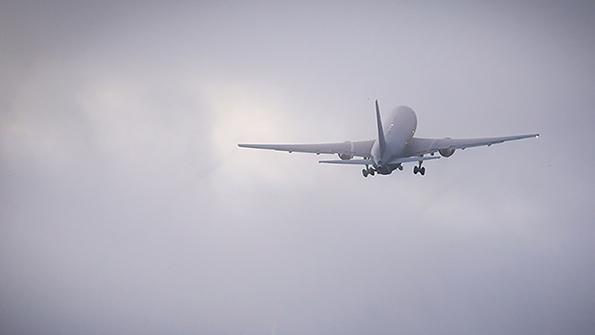
Boeing is misfiring on several cylinders. Its third-quarter results included resurgent charges on key defense programs, bringing Boeing Defense and Space (BDS) program losses to $11.5 billion since 2014. There is a strong likelihood of additional BDS overruns and delays. Worse, CEO Dave Calhoun announced that Boeing will not launch a new commercial jetliner until the next decade, guaranteeing further serious market share losses to Airbus and gravely endangering Boeing’s ability to design a new jet.
None of this is good for investors, and the company’s stock has underperformed its peers by a wide margin over the past 12 months and well before. It also is not good for the long-term health of the U.S. aerospace industry, the broader U.S. economy or the aerospace workforce. But one overlooked consequence of Boeing’s woes is the possible impact on U.S. defense. There are three areas of concern.
First, BDS execution problems mean the U.S. military services will have to keep using older, less reliable systems that are costly to operate. With KC-46 and T-7 delays, even the oldest KC-135 tankers and T-38 trainers will soldier on well past 60 years of age. Pentagon efforts to procure interim or supplemental systems—an Air Force/Navy trainer or the Air Force’s KC-Y tanker—are uncertain. Other antiquated platforms slated for replacement by Boeing aircraft, such as Air Force UH-1N helicopters or the VC-25A Air Force One, also need to wait for their delayed successors.
Second, an industrial base decision might have been made for the Pentagon, whether it wants one or not. BDS losses reflect low bids on relatively low-tech programs; it is not clear whether Boeing can hope to bid on new programs that require more advanced engineering, particularly if past performance is a key selection factor. Defense Department annoyance about those delayed aircraft could disadvantage Boeing in future contests.
Boeing could also be disadvantaged by Pentagon concerns about the company’s in-house design capabilities. Boeing’s 2015 Long-Range Strike Bomber loss to Northrop Grumman in part reflected Air Force concerns about Boeing’s strategy of relying on Lockheed Martin for much of the design work. Relying on Saab for much of the T-7 design may be viewed as a risky tactic, too. Boeing-Lockheed Martin’s Future Long-Range Assault Aircraft loss might also imply weakness in Boeing’s approach to joint bids.
The Air Force’s Next-Generation Air Dominance program looms large over this. If it excludes Boeing, and if the Navy’s F/A-XX either stalls or excludes Boeing, we can assume there are now two competitors for new fixed-wing military contracts, not three. The Defense Department does not want less competition for future programs and has signaled opposition to mergers resulting in that outcome, but it might have to live with that reality anyway.
Finally, the nation’s ability to design large aircraft must be considered. The C-17 fleet is wearing out at a rate faster than expected, and the C-5M is getting quite old, too. Given the relevance of strategic airlifters for operations in the Pacific, the Pentagon will need to start funding a new program sometime in the next 10 years.
Yet widebody jets have some of the highest entry barriers of any product. Only two countries—the U.S. and the Soviet Union—built their own twin-aisle jets or strategic airlifters; European countries were only able to build these when they abandoned national dreams and pooled resources to create Airbus. Japan’s Kawasaki C-2 may technically be a widebody airlifter, but it has a very limited payload.
Even in the U.S., only Boeing, McDonnell Douglas and Lockheed built a widebody. Lockheed finished C-5 and L-1011 production in the 1980s; it would be a very difficult path to recreate that capability.
Thus, it is down to Boeing, which last launched an all-new transport in 2004. While the 777-X is a major derivative, it is not a clean-sheet design. Calhoun’s new jetliner deferral means Boeing design teams will not hire new talent, resulting in smaller numbers and a much older demographic by the 2030s. We cannot rule out mass layoffs of these engineers, either.
In the late 1980s and early 1990s, the C-17 program was plagued by serious overruns and delays, largely because McDonnell Douglas’s aircraft design teams were in a state of atrophy. Boeing is at risk of entering that phase and perhaps an even worse one.
By the time the Air Force starts a new strategic lifter, new management may have turned the company around. Or perhaps Boeing’s operating units will then be owned by other companies. But if it stays on its present course, there is a strong risk that Boeing might not be up to the job. The only company in the world that could take its place, ironically, might be Airbus.






Comments